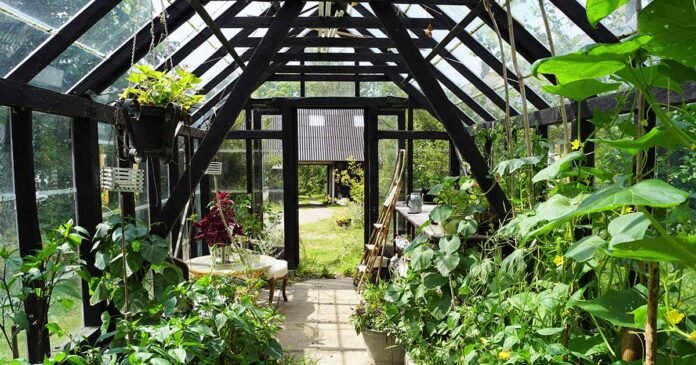Materials to Consider
An easier question might be, “what kind of materials should I avoid?”
Pretty much any type of floor can be used, like rolled rubber, interlocking mats, ring mats, polyethylene, wood, tile, fake turf, pavers, gravel, concrete, grass, bricks, and even the existing soil.

Then there are underliners or foundational material. Weed barriers and vapor barriers will make your life easier and can extend the longevity of your greenhouse.
Here are some commonly used greenhouse flooring options and a few to steer clear of.
Existing Soil
This is the most basic option. It’s free and natural, and it drains well. But it also invites pests and weeds, holds moisture, and is impossible to clean.
If you go this route, kill all the weeds with an herbicide or flame weeder and compact the ground extremely well.
Best for: Temporary structures or growing directly in the ground.
Avoid if: You want a clean or permanent setup.
Gravel or Crushed Stone
Durable, easy to install, and great for drainage. Pair it with a weed barrier and you’re good to go.
Crushed stone works better than smooth pea gravel, which can shift underfoot. Some gardeners combine gravel aisles with raised beds or pavers for a more polished look.
Best for: Good drainage, moderate budgets, and flexible setups.
Avoid if: You need to reuse runoff water or want a solid surface.
Concrete
It’s expensive, but it might be the last floor you ever need to install. You can slope it for drainage, add textured mats for grip, and clean it easily with a hose or mop.
Concrete also holds heat during the day and releases it at night, which can help keep your greenhouse warm.
Best for: Permanent greenhouses, commercial setups, wheeled carts or benches.
Avoid if: You’re on a budget or don’t want to commit to a permanent material.
Pavers or Brick
Pavers offer a good balance of beauty and function. They’re easier on the feet than concrete and allow some water to soak in.
You can install them over gravel and weed barrier for a breathable floor with charm. Brick adds a rustic look and holds heat well, too.
Best for: Decorative spaces, warm-climate heating, raised beds.
Avoid if: You want a smooth, weed-free surface or minimal maintenance.
Rolled Rubber, Interlocking or Anti-Fatigue Mats
These are great for temporary or transitional spaces. Rubber mats provide comfort underfoot and a safe, non-slip surface.


